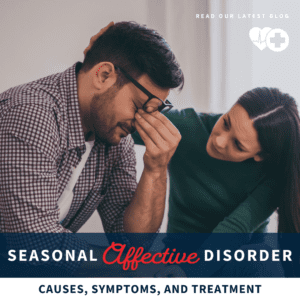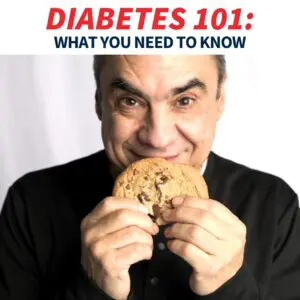Winter is Coming: What you need to know about seasonal affective disorder
 With November coming to a close and the temperatures dropping, there’s no doubt that winter is upon us. In addition to having to switch out summer fashion for sweaters and winter coats, another significant change that comes with the winter season is shorter periods of sunlight. For many people, this can cause “winter blues,” a feeling of sadness in the fall and winter months due to the shorter days and lack of exposure to sunlight. For some, this time of year can lead to winter-pattern seasonal affective disorder, known as SAD, a form of depression experienced in fall and winter.
With November coming to a close and the temperatures dropping, there’s no doubt that winter is upon us. In addition to having to switch out summer fashion for sweaters and winter coats, another significant change that comes with the winter season is shorter periods of sunlight. For many people, this can cause “winter blues,” a feeling of sadness in the fall and winter months due to the shorter days and lack of exposure to sunlight. For some, this time of year can lead to winter-pattern seasonal affective disorder, known as SAD, a form of depression experienced in fall and winter.
Learn more about signs and symptoms of winter-pattern SAD, as well as treatment options.
What are the symptoms of winter-pattern SAD?
Given that winter-pattern SAD is a type of general depression, it shares some of the most common symptoms of depression, including:
- Changes in sleep patterns
- Difficulty concentrating
- Lack of interest in activities and work/school
- Changes in weight and appetite
- Feelings of hopelessness or worthlessness
- Suicidal thoughts or urges
In addition to these general depression symptoms, people with winter-pattern SAD may experience more specific symptoms that include:
- Oversleeping (hypersomnia)
- Overeating (particularly a craving for foods that are heavy in carbs)
- Weight gain
- Social withdrawal (feeling like “hibernating”)
What causes winter-pattern SAD?
Research is still being conducted to pinpoint the causes of winter-pattern SAD. One prominent theory is that winter-pattern SAD may be caused by a lack of serotonin activity in the brain. Serotonin is a brain chemical essential for regulating mood. Research suggests that sunlight helps maintain healthy levels of serotonin. When a person gets less sunlight in the winter months, the amount of serotonin decreases, negatively affecting mood. In addition, a lack of vitamin D that is gained from sun exposure also contributes to the drop in serotonin levels.
The other prominent theory for what causes winter-pattern SAD is the overproduction of melatonin. This chemical helps regulate the sleep-wake cycle of the body, so when someone is producing more melatonin than usual, it can lead to excessive sleepiness in the daytime. Too much melatonin and not enough serotonin can lead to symptoms of winter-pattern SAD.
How is winter-pattern SAD treated?
There are three main types of treatment for winter-pattern SAD: light therapy, antidepressant medication (SSRIs) and vitamin D supplements.
Light therapy has been used to treat SAD since the 1980s. This treatment exposes a person suffering from SAD to a bright light box (10,000 lux) to make up for the lost sunlight exposure. Sessions last between 30 and 45 minutes, usually first thing in the morning. The light boxes used in this treatment are 20 times stronger than normal indoor light and are designed to block out harmful UV rays, making light therapy safe for most patients.
In addition to vitamin D supplements, physicians may prescribe an antidepressant such as fluoxetine, citalopram, sertraline, paroxetine or escitalopram to help increase the serotonin activity in the brain. Another common medication prescribed to treat SAD is bupropion, an extended-released antidepressant that can help prevent future symptoms of SAD when taken from the fall until the springtime.
A physician will recommend one of the above treatment options or a variety of treatment options based on your medical conditions and overall health.
If you or a loved one are experiencing distress or suicidal thoughts, call the National Suicide Prevention Lifeline by dialing 988 or visit 988lifeline.org.




